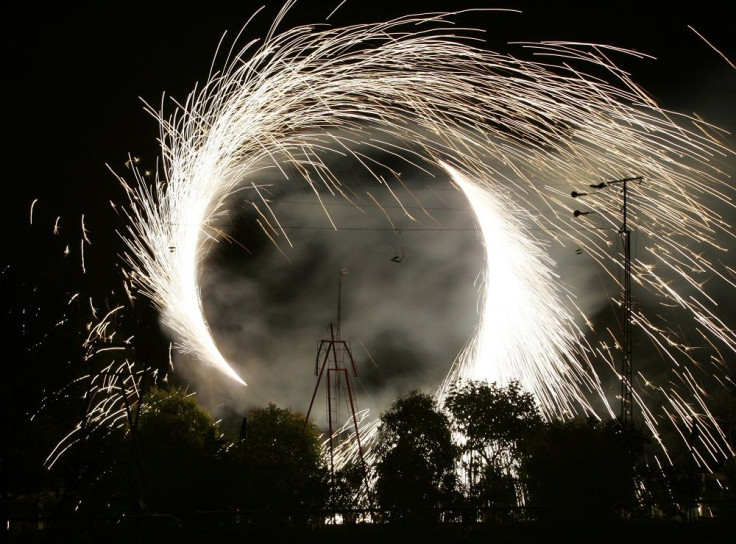Scientists: Kathryn’s Wheel is ‘stunning’ and ‘promising’

The recent issue of the Monthly Notices of the Royal Astronomical Society revealed that a rare “bull’s eye” collision between two galaxies has recently transpired some 30 million light years away behind the Milky Way galaxy. The so-called “spectacular event” was discovered through t he UK Schmidt Telescope in Australia by a team of scientists led by Professors Albert Zijlstra and Quentin Parker of the University of Manchester and University of Hong Kong, respectively.
“ Such systems are very rare and arise from “bulls-eye” collisions between two galaxies of similar mass. Shockwaves from the collision compress reservoirs of gas in each galaxy and trigger the formation of new stars. This creates a spectacular ring of intense emission, and lights up the system like a Catherine wheel firework on bonfire night,” the scientists wrote on RAS’s online journal.
Zijlstra and Parker named the event “Kathryn’s Wheel” after the famous firework Catherine Wheel (i.e. the spiral-pinwheel firework) and also after the wife of the paper’s second author. “It is not often that you get to name any objects in the sky. But I think Kathryn’s Wheel is particularly fitting, resembling as it does a firework and continuing the tradition of naming objects after loved ones,” Professor Zijlstra explained.
But the collision is not just a momentous event for astronomy. For Professor Parker, the “visually stunning” occasion could also help generate interest in astronomy and encourage the younger generation to pick up a career in space exploration. It could also help other scientists across the world studying the universe to become more familiar with other galaxies’ “still-unknown characteristics.”
“Not only is this system visually stunning, but it’s close enough to be an ideal target for detailed study. The ring is also quite low in mass—a few thousand million Suns, or less than 1 percent of the Milky Way—so our discovery shows that collision rings can form around much smaller galaxies than we thought,” Parker said.
Indeed, Parker and Zijlstra are not alone. Recently, an American firm announced that they are now planning to put their latest product, the Santilli Telescope , on the market by partnering with giant global distributors. According to Florida-based Thunder Energies Corporation (OTCQB: TNRG ) , this telescope is the first optical instrument for space explorations capable of detecting antimatter galaxies, antimatter cosmic rays, and antimatter asteroids.
The company said that it will be the “first truly new telescope since Galileo’s time.” Moreover, just like the Galilean optical instrument, this could possibly change the landscape of astronomy forever, as this would be the first time that antimatter—which is considered “nonexistent” by many and “difficult to characterize” by some—could be tangibly detected through a machine.
“In searching for antimatter galaxies, it is of importance to note that when in contact, matter and antimatter annihilate into light. Hence, all features for capturing matter are reversed for capturing antimatter, including the index of refraction which is positive for matter-light, thus requiring a convex lens to focus images, but expected to be negative for antimatter-light, thus requiring a concave lens to focus images,” said Dr. R.M. Santilli, chief scientist at Thunder Energies.
Apart from being a telescope manufacturer, Thunder Energies is also a leader in revolutionary technologies such as nuclear instruments, which is used in producing the desired flux of neutrons with the desired energy anywhere and anytime desired via a remotely operated touch screen control, and environment-safe fossil fuel and coal combustion technology , as it does not contain combustible contaminants such as carbon monoxide and hydrocarbon.
Contact the writer at feedback@ibtimes.com.au or tell us what you think below






